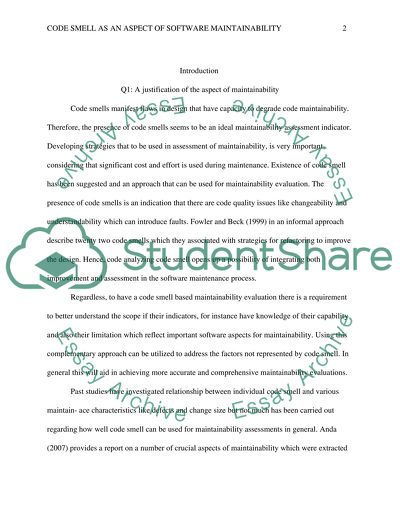Cite this document
(“Code Smell as an Aspect of Software Maintainability: the BIRT eclipse Essay”, n.d.)
Retrieved from https://studentshare.org/information-technology/1402962-evaluating-the-maintainability-of-eclipse-code
Retrieved from https://studentshare.org/information-technology/1402962-evaluating-the-maintainability-of-eclipse-code
(Code Smell As an Aspect of Software Maintainability: The BIRT Eclipse Essay)
https://studentshare.org/information-technology/1402962-evaluating-the-maintainability-of-eclipse-code.
https://studentshare.org/information-technology/1402962-evaluating-the-maintainability-of-eclipse-code.
“Code Smell As an Aspect of Software Maintainability: The BIRT Eclipse Essay”, n.d. https://studentshare.org/information-technology/1402962-evaluating-the-maintainability-of-eclipse-code.


